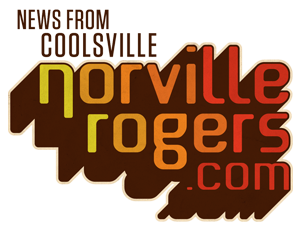
Over the years, plenty of constant readers have wondered, What ever happened to Danny Torrence?
Danny Torrence, of course, is that five-year-old boy with the special ability called “shining”, who narrowly escaped death at the hands of his father, who’d been driven insane by a haunted hotel.
Or rather, that’s who Danny Torrence was. Apparently the master of horror (and Danny’s literary father) asked himself the same question enough times that Doctor Sleep, his new novel, is the answer.
Doctor Sleep is every bit a worthy sequel to The Shining narratively, thematically and in terms of scare.

Doctor Sleep opens in 1980, three years after the events of The Shining. We get a sense of how Danny and his mom Wendy are coping in the aftermath of Jack Torrence and the Overlook. Quickly, the book skips ahead and over the first few dozen pages, we drop in again and again on Dan Torrence now all grown up.
Like his father, Dan has become an alcoholic, though Dan’s drinking is ostensibly to suppress his shine. Sooner rather than later (thanks to King’s tight narrative), Dan finds Alcoholics Anonymous, gets cleaned up and finds work at a hospice, where his particular gift enables him to comfort those at death’s door – hence his nickname and the book’s title, “Doctor Sleep”.
Dan’s journey to sobriety turns out to be all prologue. Once he’s installed at the hospice, the story truly begins.

Doctor Sleep revolves around Dan’s decision to come to the aid of one Abra Stone, a teen girl whose ability to shine dwarfs Dan’s own (he compares himself to a flashlight; Abra to a lighthouse). Abra has become the target of a vampire-like group of near-immortals who travel the United States in RVs preying on children who shine.
Dan must choose to face his myriad demons: those from his childhood, from his past mistakes and those threatening this little girl who is otherwise helpless.
Doctor Sleep draws heavily on its predecessor. Dan is an eerily perfect image of his father, Jack. King uses the culture of AA to explore how we use addictions to hide from pain, and Dan is no exception. The monster that consumed Jack Torrence is always hovering just below the surface, one drink away from consuming Dan as well.
In saving Abra, Dan finds that Abra becomes his salvation, too.
King gives us a passing reference to Abra Bacon, the character in Steinbeck’s masterpiece East of Eden. Steinbeck’s Abra represents the possibility of growth and redemption for two brothers, Aron and Cal, who in their separate ways are trying to escape the image of their own father.
So too, in committing himself to Abra’s good, Dan discovers the strength to choose to resist the lure of the monster within. Dan embraces the truth he learned in AA: he doesn’t drink because he’s covering up his secrets, or to suppress his shine. Dan drinks because he’s an alcoholic.
So too for us: we make painful choices because we’re broken.

Just like Dan, just like Cain (on whom Steinbeck’s Cal is based), we choose death or life. And so Doctor Sleep really becomes a meditation on the strength to choose life: where it comes from, what gets in its way, and why it’s so scary.
Speaking of which, you may be wondering if Doctor Sleep is scary. Fear not. It is terrifying. It may not plumb the depths of fear its predecessor did, but then again, maybe it does. I suspect this is largely up to your personal tastes, and I was looking over my shoulder and avoiding dark corners after only a few pages.
Doctor Sleep is a great, non-stop thrill ride. King fans should love it. It relies heavily enough on The Shining that you should read it first. And yes, I would read the book even if you’ve seen the film. They’re different enough that it matters.
